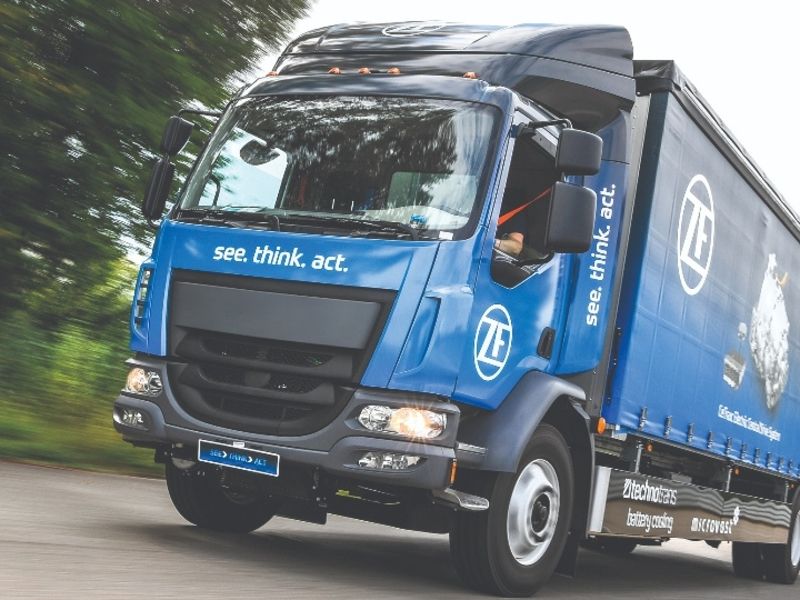
Just over six months into the union of German parts giant ZF Friedrichshafen and U.S.-based Wabco Holdings Inc., the companies are making progress in combining their talents to develop technologies for commercial vehicles.
And that’s despite the challenge of a virtual integration by the two companies without all the usual handshakes, face-to-face meetings and receptions to get to know each other.
ZF, a supplier of transmission, chassis components and systems, and steering, braking and active and passive safety systems, closed its $7 billion acquisition of the Auburn Hills, Mich., trucking parts supplier in May, just as the industry was starting to ramp up after the pandemic-forced shutdown.
Integrating the two large industrial companies has been unique under work-from-home stipulations around the world. But ZF and the former Wabco have synergies in advanced driver-assist systems and autonomous features that have already proved beneficial, ZF CEO Wolf-Henning Scheider told Automotive News.
“It is the perfect match, these two companies,” Scheider said. “The existing product portfolio of both companies fits together very, very well.
“On the electronics side, Wabco had already developed software components and ECUs that control the dynamics of the vehicle, whereas ZF has a pretty significant piece in the area of cameras and radars and perception of the vehicle,” he added. “That is an example where we put immediately our competencies together.”
Scheider said the combination of the two companies’ technology has already resulted in new possibilities, which will be seen in an as-yet-unannounced product launch next year. Wabco also gave ZF a significant position in the Indian market, where ZF did not previously have a strong foothold.
The acquisition “helped us also to balance out our worldwide presence in the commercial vehicle sector on a pretty equal level,” Scheider said, “no matter in what region we are operating them.”
The Wabco acquisition followed another strategic move ZF made in the U.S. in 2015, when it bought airbag and safety supplier TRW Automotive for $13.5 billion as part of a shift away from its concentration on heavy parts such as transmissions and axles. The TRW acquisition helped make ZF a key player in self-driving and advanced safety technologies.
With $34.23 billion in sales to global automakers in 2019, down from $34.48 billion the year before, ZF is a mammoth swallowing Wabco. Wabco reported revenue of $3.83 billion in 2019, mostly from braking control systems and other safety technologies for commercial vehicles.
But Wabco will accelerate ZF’s portfolio expansion now, Scheider said. It already has bolstered ZF’s work in connected vehicles and autonomous trucks, he said.
“We are pretty well underway now in integrating, already creating synergies, already creating common products,” said Scheider, who has been chief executive since 2018. “Only six months after the closing, I’m very positive about this merger.”
Aside from having to integrate virtually, the Wabco acquisition went largely unbothered by COVID-19, Scheider said.
But like many suppliers around the industry, ZF’s overall business has been hit by the crisis. The company saw a 26 percent drop in sales in the first half of this year.
With Wabco on board, Scheider anticipates growing overall chassis integration and vehicle dynamics, combining these with automatic safety functions, and providing advanced telematics functions and connectivity.
“The most important topic beyond purchasing and sales topics is new products and systems for our customers to an extent that they couldn’t have before,” Scheider said.
Scheider is optimistic.
“I consider COVID as a reset and a relaunch of things we have talked long about — but at a faster speed,” he said. “I would say this has increased the speed by at least two or three years.
“We decided in March that we won’t develop any products for a traditional combustion engine anymore and put our resources fully on new products because we just realized if we don’t do it, we cannot reach the speed that’s necessary for this conversion that we are seeing coming up on us.”